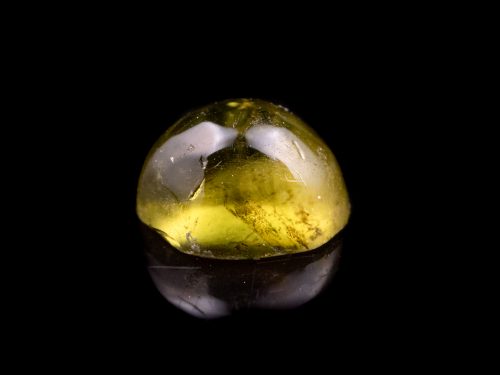Palladot Gemstones
Pure olivine is the gemstone peridot. Though incredibly rare, pallasites are rich in peridot, so we can call them “gemstones from space” with confidence. Out of nearly 69,000 officially recognized meteorites, there are only 155 pallasites. Of those 155 pallasites, it was long believed that only one, Esquel found in Argentina in 1951, had unshocked crystals, until the exciting discovery very large masses of Admire in Kansas.
Crystals that are shocked have experienced a massive trauma in their past that results in the formation of many fractures — a bit like a crack in a windshield. In the case of pallasite crystals, that trauma probably took place on the parent body, millions of years ago. As such, shocked crystals do not lend themselves to faceting.
When prepared examples of Admire were taken to the Center for Meteorite Studies at ASU, Tempe, a remarkable discovery was made: the olivine (peridot) crystals did not have the expected shock features. After being soaked in acid baths, drained, washed, and sorted by hand, experts found that only about 1 in 100 of the resulting crystals were suitable for faceting.
To recap: 69,000 meteorites have produced only 155 pallasites, of which very few had unshocked crystals, and only one has sufficient availability. Further, out of end-product rough gems, a tiny 1% can be processed into finished gems. All of which makes Admire peridot space gems one of the rarest materials in existence. Emeralds seem commonplace in comparison.
The resulting Admire peridot has been studied by meteoriticists and gemologists and officially recognized as a new gemstone, with the name palladot.
The GIA has officially recognized the Admire peridot crystals as a unique gemstone, exhibiting features never before seen in extraterrestrial peridot.
Exceedingly rare and alluringly beautiful.
Showing the single result
